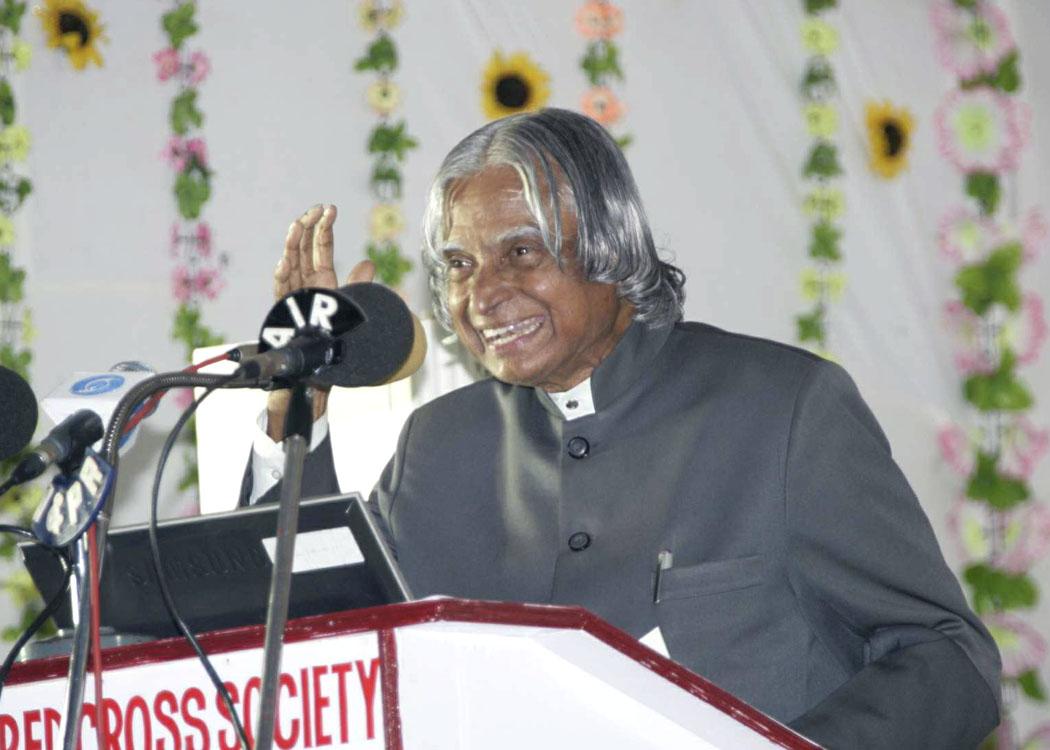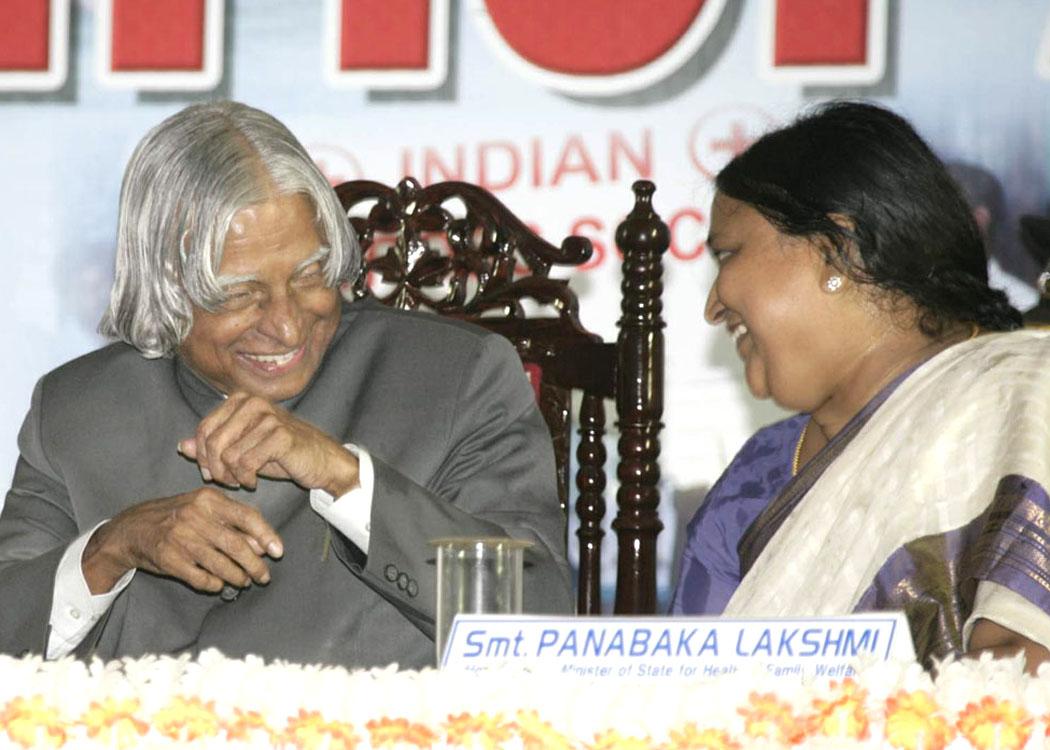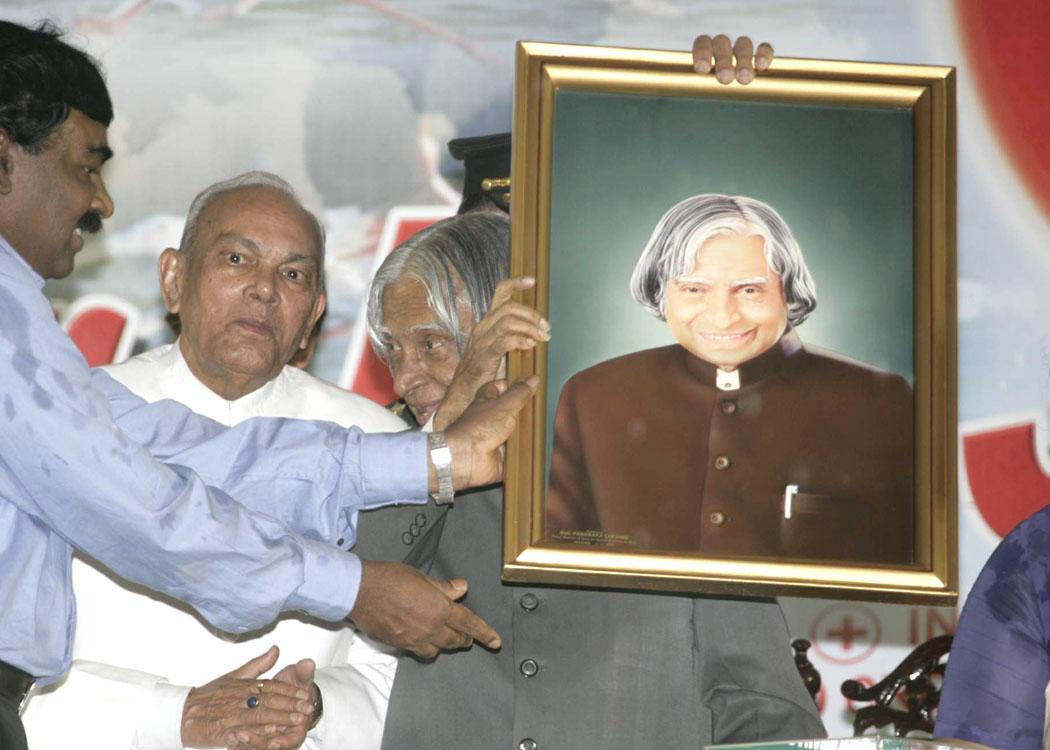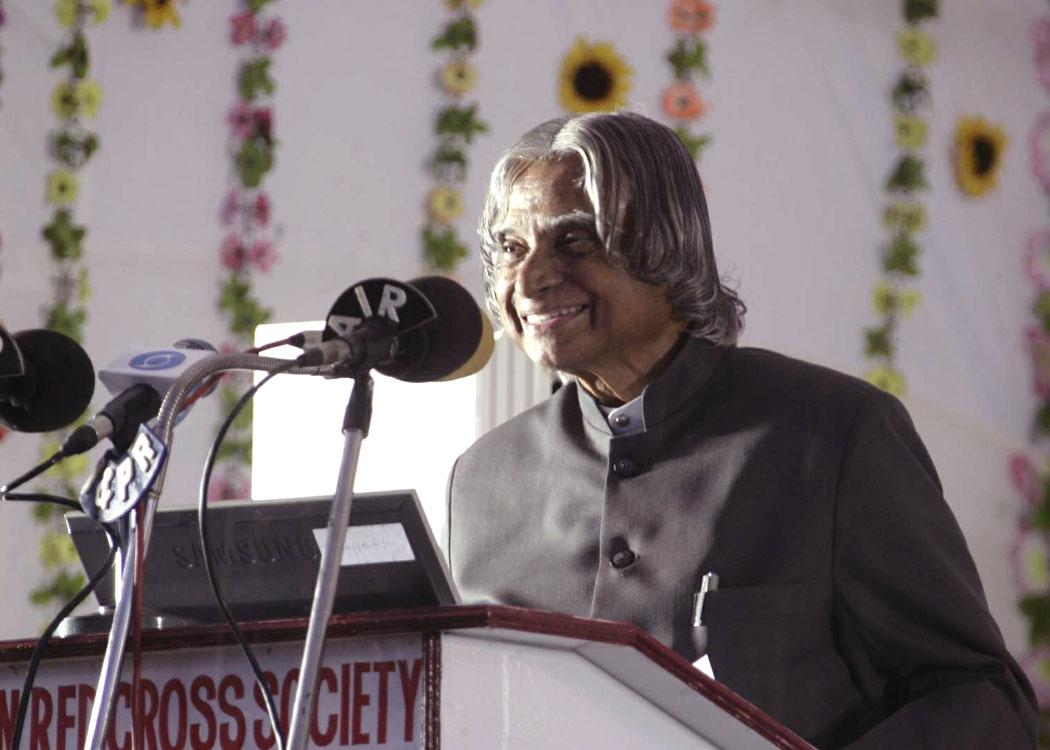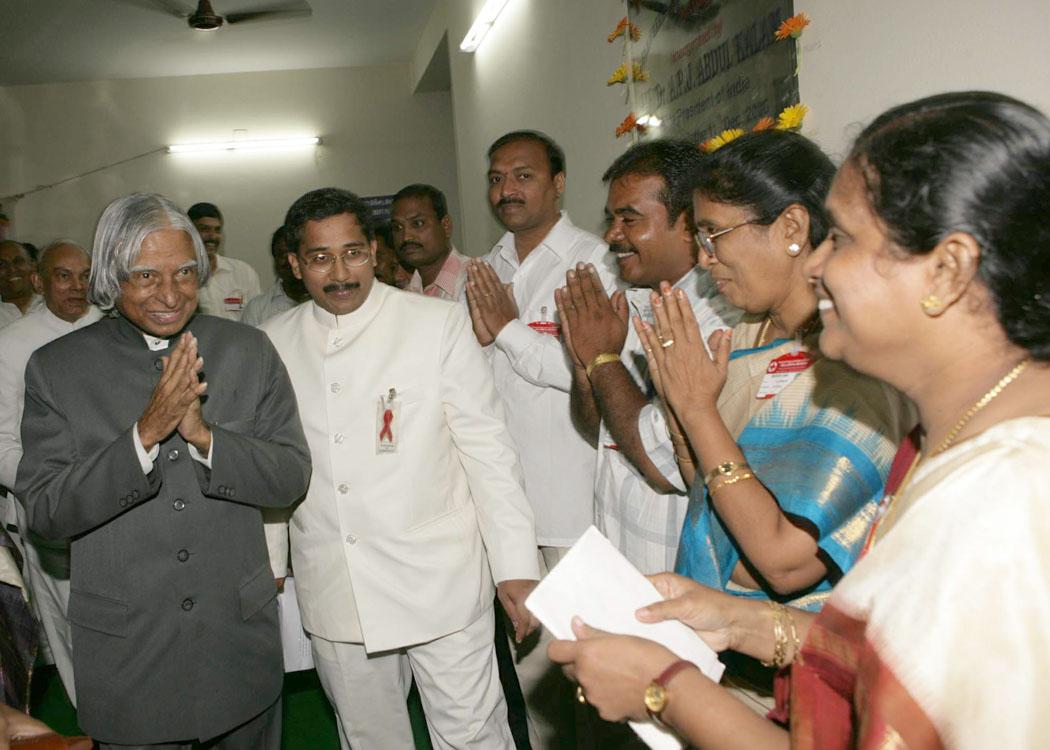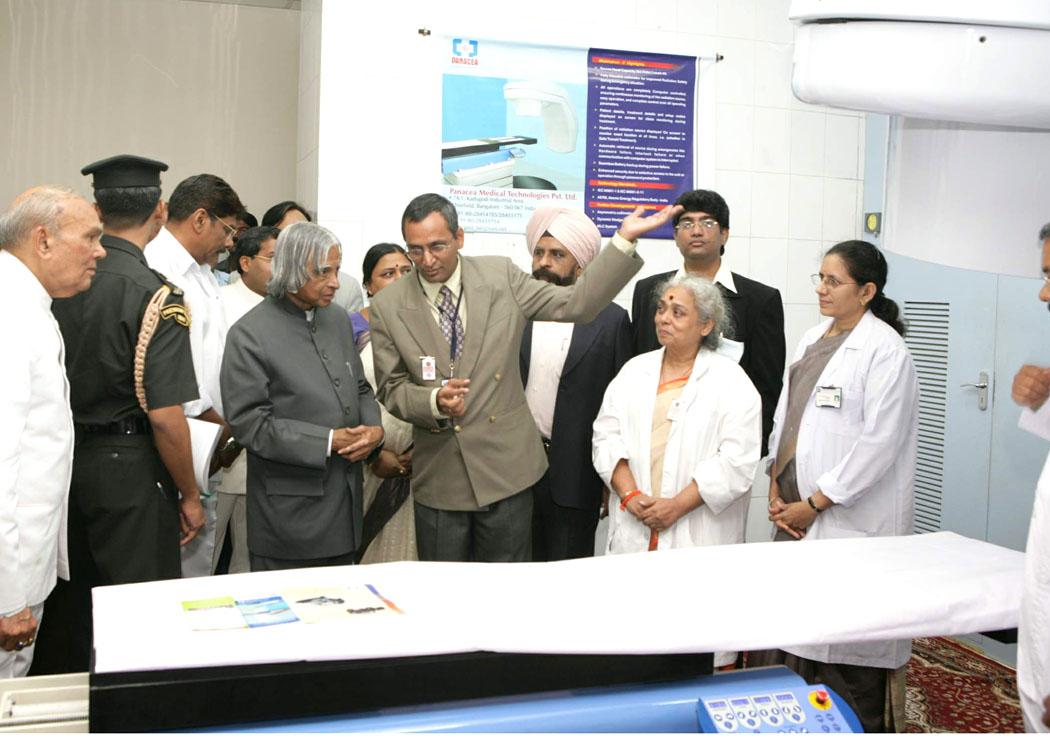Address at the Inauguration of Radiotherapy Centre of Indian Red Cross Society, Nellore, Andhra Pradesh
Nellore, Andhra Pradesh : 11-12-2006
Service to Humanity is Service to God
I am indeed delighted to participate in the inauguration of Radiotherapy Centre of Indian Red Cross Society (IRCS). My greetings to the members of Red Cross Society, Government functionaries, medical professionals, donors, volunteers and distinguished guests on this occasion. Red Cross Society always comes to the rescue of human beings when they are in distress. The volunteers of Red Cross Society work selflessly and bring cheer to the people at the time when no other organized facility is available. They work with the motto ?service to humanity is service to God?. I am sure God?s blessings will always be there with the members of this organization endeavoring to bring cheers to the suffering humanity.
While inaugurating the radio therapy facility, the word radiation itself brings to my mind a great scientist women scientists Madam Curie, who discovered the source of radiation at the cost of her life. Since then millions of millions of lives have been saved through radio therapy. Curie?s life was full of challenges. She was not afraid of the problems, she defeated the problem and succeeded.
Madam Curie - a dream for every scientist
Madam Curie was a co-worker of Henri Becquerel during research, who discovered the properties of the element uranium. Curie came to know about those properties and set about investigating the effect, which she named "radio-activity" for her Doctorate research.
Marie Curie checked many other elements to determine whether they too were radioactive. She found one, thorium, and also came across a source of radiation in a mixture called "pitch-blend," which was much more powerful than either thorium or uranium.
Working together, it took Marie and her husband Pierre four years to isolate the radioactive source in the pitch-blend. Madam Curie used to carry large quantity of pitch-blend on her head for extracting few grams of material in the laboratory which needed tons of ?pitch-blend?. That few grams of the material was her discovery. Marie named it as radium. For the discovery of radium, Marie and Pierre won a Nobel Prize in Physics in 1903, which they shared with their friend A.Henri Becquerel. Shortly, Marie found that what she had discovered was not pure radium, but she was able to isolate the element itself after quite a struggle. For this work, she was given the Nobel Prize for Chemistry in 1911.
During her work, Marie discovered radiation could kill human cells. She reasoned that if it could kill healthy human cells, it could kill diseased human cells also and went about isolating radium for use in killing tumors.
In 1906 Pierre Curie was offered the position of director of the Physics Laboratory at the Sorbonne. Before he could take the position, however, he was run over by a carriage and killed. After her husband died, Marie was offered and took the position, the first woman to become director of a research laboratory. In our country time has come for talented women scientists to take up the position of directors of major scientific laboratories.
During the first World War, Marie Curie went to work for the French designing and building X-ray machines. Knowing that moving soldiers to a hospital before they needed surgery was not always possible, she designed the first mobile X-ray machine and traveled with it along the front lines during the war.
On July 4, 1934, Marie Curie died in Paris, killed by her own experiments. She died of radiation poisoning and may have been the first person to do so. Marie Curie had brought herself up from poverty, struggling to get her education and succeeding brilliantly. The work she did, she did with patience, often getting results only after years of careful experimentation, while struggling for money to support her work. For her struggles, she received two Nobel Prizes - the first woman to win even one. Through the knowledge she gained, thousands of lives have been saved. The courage and perseverance shown by Madame Curie in her pursuit of scientific mission and achieving successes are indeed remarkable and stimulating.
My experience in Cancer care
When I am with you, I would like to remember my visit to Peddamiram, Bhimavaram district, where Dr M.R. Raju has established a Cancer treatment centre in the rural ambience. Prof Raju?s life is indeed a great example, how a famous nuclear scientist working in Los Alamos Laboratory, USA decided to transform the village Peddamiram and its surroundings, with the support of his family members. With his assets, he started the Mahatma Gandhi Memorial Medical Trust in that village. In a decade, he and his team supported by volunteers from various institutions from India and abroad, have brought great change to the people in the village. Particularly he targeted character building and upliftment of the children in the age group of 3 to 5 years. This has totally transformed the village atmosphere and the drop out rate of the children in schools has come down from 70% to less than 30%. They are receiving creative learning in a harmonious atmosphere. A confident young population is emerging in the village. In addition, two hospitals, one for cancer diagnosis and treatment, particularly to cervical cancer among tribals and the second one for treatment of eye diseases have been commissioned in the village which are continuously progressing. Now, I would like to talk about three of my friends who are fighting Cancer bravely.
Brave Hearts
I have three friends so valiantly handling their blood cancers. The first one is an industrialist, second one is an author and the third one is a painter, all three are handling their blood cancers with courage. Undaunted by the presence of a disease of poor morbidity in their bodies they are relentlessly pursuing life. The industrialist says, like a gladiator, he will defeat his cancerous cells. The author is learning more about self by writing books of great spiritual and literary value. One of his work is titled ?Celebration of the Cells?. I had invited the painter to stay in the Rashtrapati Bhavan. He created beautiful paintings capturing the beauty and life in Mughal Garden. He showed me one painting which he did while undergoing chemotherapy at the Tata Memorial Hospital. The indomitable spirit was shining over the trauma of pain. After interacting with these three friends, I learnt that the life of a cancer patient is a process of adjustment to a disease that at times is in remission and at other times active. Any illness or even discomfort can direct us to the often-ignored self. It can even become a journey of faith. The medical practitioners can take a lead from this experience while advising patients. Let me now discuss the application of stem cell research for treatment of cancer.
Stem Cell Research
Newer knowledge emerging out of research on stem cells from abroad and India has to be taken note of and studied. In fact, regenerative medicine is fast getting established as a complete branch of medical science. The embryo starts out as a mass of undifferentiated cells, which then divide, multiply and go down differential paths to take the shape of various tissues and organs of the body. The mechanisms which constitute this orderly process of differentiation is fast getting understood at the laboratory level. And the state-of-the-art in this area holds the promise of regenerating tissue that malfunctions due to injury, age, disease or genetic abnormality. Whether large volumes of cells can be produced from stem cells is yet to be seen. I hope that the day is not far, when we will be able to get a tailor-made bone marrow out of stem cells to survive for the next sixty years and beyond. I would like to talk about the need for social support to reduce the stress among cancer patients.
Integrated treatment (Physiology, Psychology and Immunology)
The suffering of cancer does not remain confined to the patient alone. It often engulfs the entire family and the social surroundings. The emotional trauma is just intense. The Bangalore Cancer Research Foundation conducted a unique multi-institutional study with DRDO with the participation of Defence Institute of Psychological Research (DIPR), Defence Institute of Physiology and Allied Sciences (DIPAS) and Centre for Cellular and Molecular Biology (CCMB). The study was aimed at establishing the relationship of the stress of breast cancer patients with the neuro-endocrine response leading to immune modulation, which will determine the prognosis to treatment or progression of the disease. The perceived stress of the patients will be influenced by the social support being provided by the spouses and caregivers and hence in the study a systems approach was made to evaluate the stress of the patients in the social ambience. Patients of breast cancer, their spouses and equal number of the care givers served as volunteers for the study.
Standard psychological methods were used to quantify the stress of the patients, their coping strategies, blood cortisol, cell mediated immunity and humoral immunity were measured in all the three groups. The study revealed specific correlation of the stress of the patients with the immune responses. Patients who received adequate social support had lower level of perceived stress and their prognosis to surgical, radiation and chemotherapy were better than those who had higher level of perceived stress due to inadequate emotional support from the spouses and care givers. The primary message, which emanated from the study, indicates that for successful prognosis, it will be essential to combine psychotherapy along with the conventional medical management of cancer. It also emphasizes on the necessity to address the problem at the mind-body complex where the etiological factor may have the root. I would like the doctors assembled here to implement this method while treating the patients in Nellore region. Now, I would like to discuss about screening of patients for early diagnosis and cure.
Study on Cervical Cancer
The application of indigenous technology to make healthcare affordable as well as accessible has brought me together to Prof Kakarla Subba Rao. We worked together on many projects that will be useful for rural people. In one such project of Society for Biomedical Technology (SBMT) of DRDO (Defence Research & Development Organisation) named TULASI, mass screening of cervical cancer was undertaken by the Nizam?s Institute of Medical Sciences (NIMS) and Deccan College of Medical sciences (DCMS). More than 50 camps in tribal and rural areas as well as in the urban slums have been conducted to screen women for cervical cancer at their door-step. A number of factors have emerged leading to cervical cancer. Early marriage, multiple childbirths and lack of reproductive hygiene, generally prevalent in lower socio-economic groups have been shown to be associated with increased risk of cervical cancer. The study also established the positive effect of use barrier methods of contraception in protecting the females against human papilloma virus. Although, TULASI Project has succeeded in creating awareness about this most prevalent of female cancers in India, an effective follow-up and treatment system to treat cervical cancer patients has yet to be established. The Indian Red Cross Society can consider such screening methods among the population of Nellore district where I find nearly 45% of the cases are Cervical cancer cases. This type of screening may enable early detection leading to early cure of these cases.
Conclusion
All members of the Red Cross Society is in the mission of providing support with love and affection. You are definitely in a noble mission. You have been extending this service without any bias. Your ideals are lofty and you have proved your credibility with long years of selfless service. I am sure the members of Nellore Indian Red Cross Society will definitely uphold the dignity and high traditions set by your predecessors. Let the rays of service to humanity spread throughout the world. I find that there are over 560 high schools and nearly 200 colleges in Nellore district including the medical college. I would suggest that the State authorities to make joining either the Junior Red Cross or Youth Red Cross compulsory for all the high school and college students of Nellore district. Firstly, it will inculcate a sense of discipline and social service among students. Secondly, these trained men will be a valuable asset for dealing with complex relief measures during a natural or manmade calamity.
With these words, I inaugurate the Radiotherapy Centre of Indian Red Cross Society and my best wishes to all the members of this noble organization for success in your missions of removing the pain of the suffering people.
May God bless you all.

